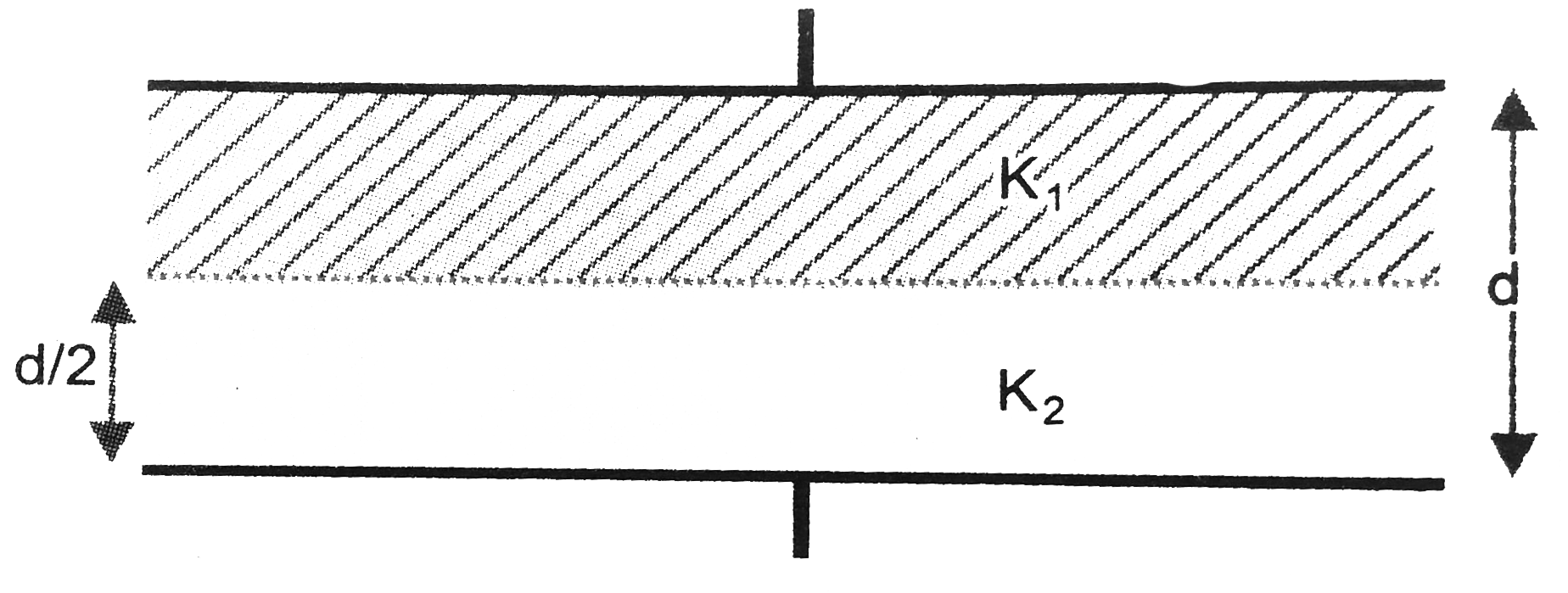A parallel plate capacitor with liquid filled between the plates (dielectric constant of liquid, k=4)has capacitance 20μF. If the liquid is removed then capacitance of capacitor becomes
10μF
5μF
80μF
20μF
To solve the problem, we will use the relationship between the capacitance of a capacitor with a dielectric and the capacitance without a dielectric.
1. Understand the relationship between capacitance with and without a dielectric:
The capacitance C of a parallel plate capacitor filled with a dielectric material is given by the formula:
C=k⋅C0
where C0 is the capacitance without the dielectric, and k is the dielectric constant of the material.
2. Given values:
- Dielectric constant k=4
- Capacitance with the liquid C=20μF
3. Set up the equation using the given capacitance:
From the relationship, we can express the capacitance without the dielectric as:
C0=Ck
Substituting the known values:
C0=20μF4
4. Calculate C0:
C0=5μF
5. Conclusion:
The capacitance of the capacitor when the liquid is removed (i.e., when it is in air) is 5μF.
Final Answer:
The capacitance of the capacitor becomes 5μF when the liquid is removed.
---
The capacitance C of a parallel plate capacitor filled with a dielectric material is given by the formula:
C=k⋅C0
where C0 is the capacitance without the dielectric, and k is the dielectric constant of the material.
- Dielectric constant k=4
- Capacitance with the liquid C=20μF
From the relationship, we can express the capacitance without the dielectric as:
C0=Ck
Substituting the known values:
C0=20μF4
C0=5μF
The capacitance of the capacitor when the liquid is removed (i.e., when it is in air) is 5μF.
The capacitance of the capacitor becomes 5μF when the liquid is removed.
Topper's Solved these Questions
Similar Questions
A parallel plate capacitor with a liquid filled between the plates (dielectric constant of liquid, K = 4) has capacitance 20μF. If the liquid is removed then capacitance of capacitor becomes
View SolutionThe capacitor shown has square plates of side "L" and has gap d between the plates.If the dielectric constant of the material of the slab is "k" ,the capacitance of the capacitor is
View Solution
Knowledge Check
A parallel plate condenser with oil between the plates (dielectric constant of oil K = 2 ) has a capacitance C. if the oil is removed , then capacitance of the capacitor becomes
AC√2B2CC√2CDC2A parallel plate capacitor with air between plates (dielectric constant K =2) has a capacitance C. If the air is removed, then capacitance of the capacitor is
AC√2BC2C√2CD2CA parallel plate capacitor with a sheet of paper (dielectric constant K) between the plates has a capacitance C. If the sheet is removed then capacitance of the capacitor becomes
AKCBCKC√KCDC√K
A parallel plate capacitor is filled with dielectrics as shown in Fig. What is its capacitance ?

View SolutionA parallel plate condenser with oil (dielectric constant 2) between the plates has capacitance C. If oil is removed, the capacitance of capacitor becomes
View SolutionCapacitor of capacitance C with oil between the plates of dielectric constant 2. If oil is removed, the capacitance is .
View SolutionA parallel plate capacitor with oil as a dielectric between the plates has a capacitance C. if the oil, with dielectric constannt (K=3), is removed, then the capacitance of the capacitor will be
View SolutionA parallel plate capacitor is filled with dielectrics. What is capacitance?

View Solution
